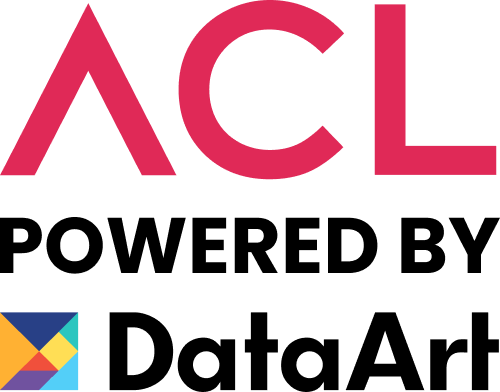Best Code Review Practices for Developers: A Technical Deep Dive
In the vast realm of software development, code reviews stand as one of the most vital processes, akin to the rigorous checks and balances in financial systems or the editorial scrutiny in publishing. Just as a manuscript undergoes detailed examination by an editor before hitting the shelves, code should be thoroughly reviewed and refined before integration. Not only do these reviews ensure that the software is free from defects, but they also guarantee that the code aligns with the architectural vision, optimizes performance, and follows the best practices that have been set. This technical exploration isn't just about ensuring that code "works"; it's about ensuring the code thrives in the real-world scenarios it will encounter. Let's embark on this deep dive into the intricate world of code review best practices.
At ACL, it's not just about the code; it's about the people behind it. For over 30 years, we've fostered a vibrant community of tech aficionados deeply connected to the rich tapestry of Latin America. With a presence in 14 countries and over 700 of the region’s most dedicated developers, our history speaks volumes about our dedication to the highest standards. Esteemed collaborations with industry forerunners like IBM, Deloitte, Oracle, and Walmart highlight our credibility and the confidence they place in us. So, what makes us shine in the web development domain? Our discerning recruitment approach. Out of the 5,000 developer profiles we assessed over the last two years, we've chosen individuals who are not just technically adept but also harmonize with our distinct ethos. This balanced focus on expertise and cultural compatibility ensures that we stand out as authorities in web development, producing projects that are impeccable in function and heartfelt in essence.
- Establish a Code Review Metric
- Before starting with the review, it's beneficial to have a set of metrics or criteria for evaluation. This could include:
- Code Coverage: Ensure that the code changes come with appropriate tests and that these tests cover a significant portion of the new or altered functionality.
- Complexity Analysis: Tools like Cyclomatic Complexity can quantify the complexity of the code. Code with high complexity may be harder to maintain and can be a red flag.
- Automate the Basics
- Before a human even looks at the code, automate the basic checks. Implementing Continuous Integration (CI) tools can be immensely beneficial here.
- Static Code Analysis: Use tools like ESLint, TSLint, or Pylint to catch basic issues such as style violations, undefined variables, or unused imports.
- Automated Testing: Ensure that the code passes all existing unit, integration, and end-to-end tests.
- Dependency Checks: Ensure that any new libraries or dependencies do not have known vulnerabilities.
- Dive Deep into Architecture and Design Patterns
- Beyond the basic syntax and style checks, it's vital to assess the structural integrity of the code.
- Evaluate Modularity: Check if the code respects the Single Responsibility Principle. Each module or class should have a clear, singular purpose.
- Check for Scalability: Does the proposed change scale well, or does it introduce potential bottlenecks? For instance, nested loops or recursive calls without proper exit conditions can cause performance issues.
- Consistency: Ensure the new code aligns with existing architectural patterns and design paradigms used in the project.
- Validate Error Handling
- Robust code gracefully handles unexpected scenarios.
- Boundary Checks: Ensure that arrays, lists, and other data structures have proper boundary checks to prevent out-of-bounds errors.
- Exception Handling: Check if the code is equipped to handle unexpected exceptions without crashing the application.
- Logging: Ensure that exceptions, errors, and significant events are appropriately logged for debugging and monitoring.
- Thread Safety and Concurrency Concerns
- For applications that rely on multi-threading or asynchronous operations:
- Resource Locking: Ensure that shared resources are correctly locked to prevent race conditions.
- Avoid Deadlocks: Ensure that there are no situations where threads could end up waiting on each other indefinitely.
- Asynchronous Operations: If the code involves promises, callbacks, or other asynchronous paradigms, ensure they're handled correctly to prevent potential issues or inefficiencies.
- Ensure Proper Documentation
- While not always a primary focus, good documentation can save hours of debugging and developer effort later on.
- Function/Method Comments: Ensure that each function or method has a brief comment explaining its purpose, parameters, return values, and potential exceptions.
- Complex Code Sections: If a particular logic segment is intricate, it should have inline comments explaining the rationale.
- Feedback with Empathy
- Always frame your feedback positively and constructively.
- Be Specific: Instead of vague feedback like "This is confusing," pinpoint the issue, e.g., "This recursive call might be hard to follow. Can we simplify or add comments?"
- Ask Questions: Instead of dictating changes, ask questions. "Is there a reason we're using recursion here instead of iteration?" This fosters dialogue and might enlighten you on the coder's rationale.
Conclusion:
The realm of code review is multifaceted, going beyond just spotting errors to enhancing code efficiency, scalability, and maintainability. It's akin to the meticulous craft of sculpting, where the sculptor doesn't just aim to create a figure but to chisel out a masterpiece. Similarly, a well-executed code review doesn't just produce functional software; it results in a robust, scalable, and efficient application that stands the test of time. By steadfastly upholding the standards and practices detailed in this guide, development teams can ensure they're not just building software, but crafting masterpieces that will serve users reliably and efficiently for years to come.
Ready to hire a web developer and get started with software development outsourcing?
At ACL we ensure your software development projects are successful by helping you hire the best nearshore developers in Latin America through staff augmentation and nearshore outsourcing. Our technical recruiters will find the top LATAM talent for your development solutions and handle everything from vetting to initial interviewing. Whether you’re looking to hire a big outsourced development team or just do one direct placement, our team can help you welcome the right people to your staff. Contact Us today to book your free discovery call and learn more about our software development outsourcing services!






